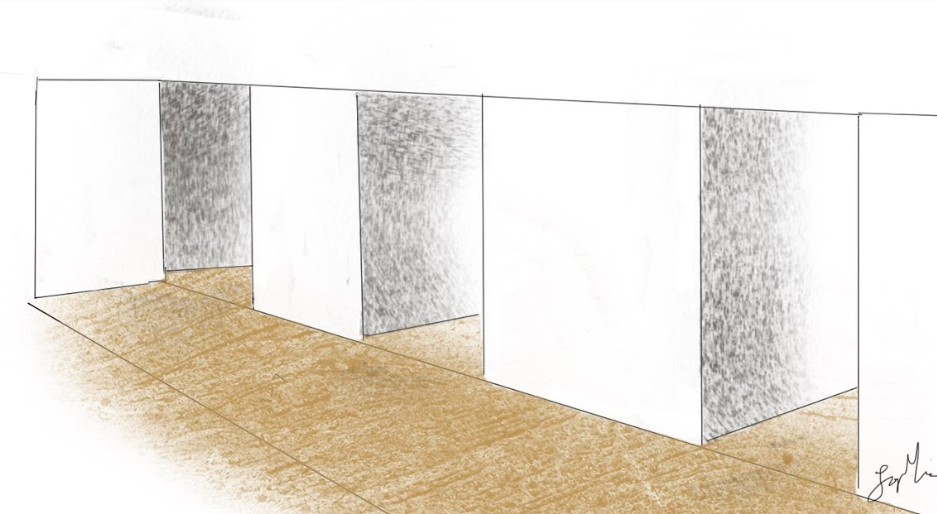In the spring of my freshman year, my friends and I became set on living in Harold Smith. The lush fields, beautiful common room, and towel warmers made it perfect for us. We had just two problems: we were a group of four black girls in a relatively small dorm.
I spoke with upperclassmen, asking if they had ever seen four black girls on a hall in HS at once. Everyone responded with “no” and that there probably wouldn’t ever be. We weren’t convinced; it made no sense. One of my friends and I decided to talk to a dean involved with housing to try to gain some favor, expressing how much it meant for us to live together. We strategized and decided one of us would sign up alone, and three together— this way we would be more likely to get the dorm. Our group of three pulled a twenty-six and we became even more optimistic about the outcome. After strategizing, speaking with a dean, and pulling a very low number, three of us were rewarded with our second choice hall, and we couldn’t have been happier about it.
While the aim is to promote diversity, the housing system ultimately ends up creating micro-halls reflective of Deerfield’s demographic breakdown. Deerfield is a relatively diverse community, with 54 students identifying as black according to Deerfield’s website. There are around 30 halls on campus, dwindling the number of black students on each hall to one to three, which can quickly become an isolating environment for some students.
Diversity and Inclusion are two sides of the same coin, yet at Deerfield the inclusivity piece significantly lags behind. The dorms are not a safe space for many black students; I’ve felt insecure when doing the simplest of things, like washing my hair or wearing my headscarf around the hall before bed. I have never felt more like an alien than when I walked out of my room freshman year with my afro out for the first time. There’s also the constant misnaming — I was called my roommate’s, who is also black, name on my hall constantly, which isolated us further from everyone else. In the three halls I have lived on, there’s never been much importance placed on inclusion and making the hall a safe place for everyone.
An unintended consequence of the housing system is the division among black students. While Deerfield pushes black students to reach out to students of different backgrounds — I’ve always made the effort to do so — there is no emphasis on reaching out to each other. Some black students even avoid other students of color out of fear of being typed as unfriendly to their white peers. In fact, at Deerfield it is viewed as strange for a group of mostly black students to sit together in the dining hall, but there is no judgement towards tables with mostly white students. There’s the unoriginal, “why are they only sitting with each other if they want to be included” or jokes about our so-called ‘self segregation’ that are almost underlined by the fact that we can’t even live in a dorm with too many of us. In order to allow for better inclusion and connection within the community; Deerfield’s diversity should never be divisive.

This year, with the addition of squads, to promote community health, halls have become more isolating than ever. Part of the Deerfield experience is becoming culturally competent and learning about other backgrounds, but it can be draining to constantly be the educator from which students learn to be more culturally versed. The strategic division of black students to add some diversity to each squad, places barriers between students of color in the community that COVID-19 related safety constraints make especially challenging to overcome. Squads are small, and it’s hard for many black students to be alone, unable to visit friends or other students who may also feel like an outsider on their own hall. It is a detriment to emotional well being to feel unwelcome in the dorms we make our homes for the year. Diversity in the dorms is meaningless if it comes at the expense of students’ wellbeing.
As an optimist, I’ve thought about some ways to better balance diversity and inclusion while putting students’ wellbeings first. The simplest solution is to ask questions and respond by adjusting the system. If Deerfield refocused on the root of these feelings of discomfort within halls instead of numbers, dorms would be safer, happier places for everyone. It’s also important to remember that diversity is about more than just racial and cultural differences. Black students are all different from each other with different things to contribute to a hall. Personally, I’ve made the strongest connections not out of seeking comfort in fellow black students, or pretending like race doesn’t exist amongst others, but in finding people who I connect with at heart.

